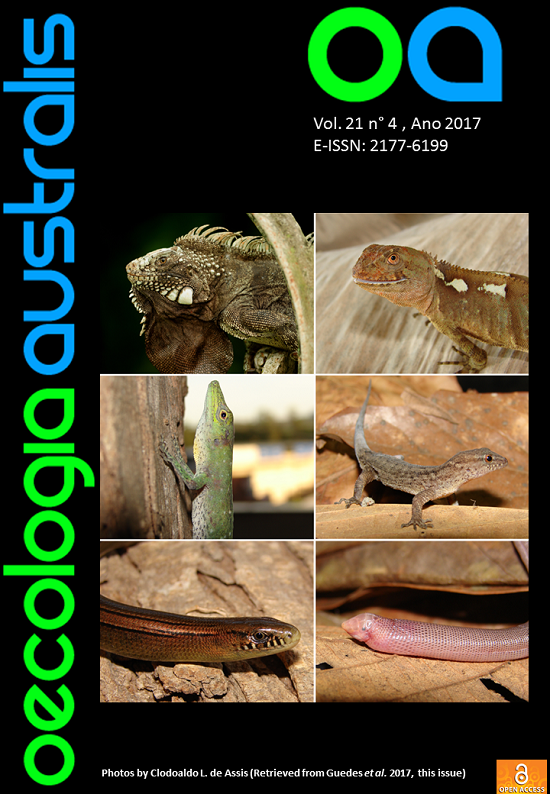ECTOPARASITIC BAT FLIES (DIPTERA, STREBLIDAE) FOUND ON BATS (CHIROPTERA, MAMMALIA) IN THE MATA DO JUNCO WILDLIFE REFUGE IN SERGIPE, NORTHEASTERN BRAZIL
DOI:
https://doi.org/10.4257/oeco.2017.2104.03Palavras-chave:
Atlantic Forest, infracommunity, flies, Northeast, PhyllostomidaeResumo
Bats are hosts of many groups of parasites, including bat flies (Diptera, Streblidae). Although parasitism is common in bats, especially in members of the family Phyllostomidae, few studies have discussed host--parasite associations. In this paper, we present data on the community of bat flies parasitizing bats in a remnant of Atlantic Forest in Sergipe, northeastern Brazil. The bats were captured with mist nets over an eight-month period in the Mata do Junco Wildlife Refuge in Sergipe, Brazil. For all ectoparasites captured, we calculated parasitism rates -- the prevalence, abundance and mean intensity of infestation by the parasite. We collected 269 bat flies, representing 18 species, parasitizing 113 specimens of bats belonging to the families Emballonuridae and Phyllostomidae. The bat fly species Trichobius joblingi (45.9%), Speiseria ambigua (10%), and Trichobius costalimai (8.8%) were the most abundant, accounting for 65% of the total specimens. The average intensity of parasitism ranged was 1-7%, with the highest prevalence being recorded in Phyllostomus discolor (P=66,6%). Around 72% of the associations were considered to be primary. Infracommunities were recorded in eight bat species. Here, we present new data on the bat fly community, as well as new data on parasitism and host-parasite interactions, and records of rare species, such as Trichobius anducei.Downloads
Arquivos adicionais
Publicado
2017-12-20
Edição
Seção
Artigos


